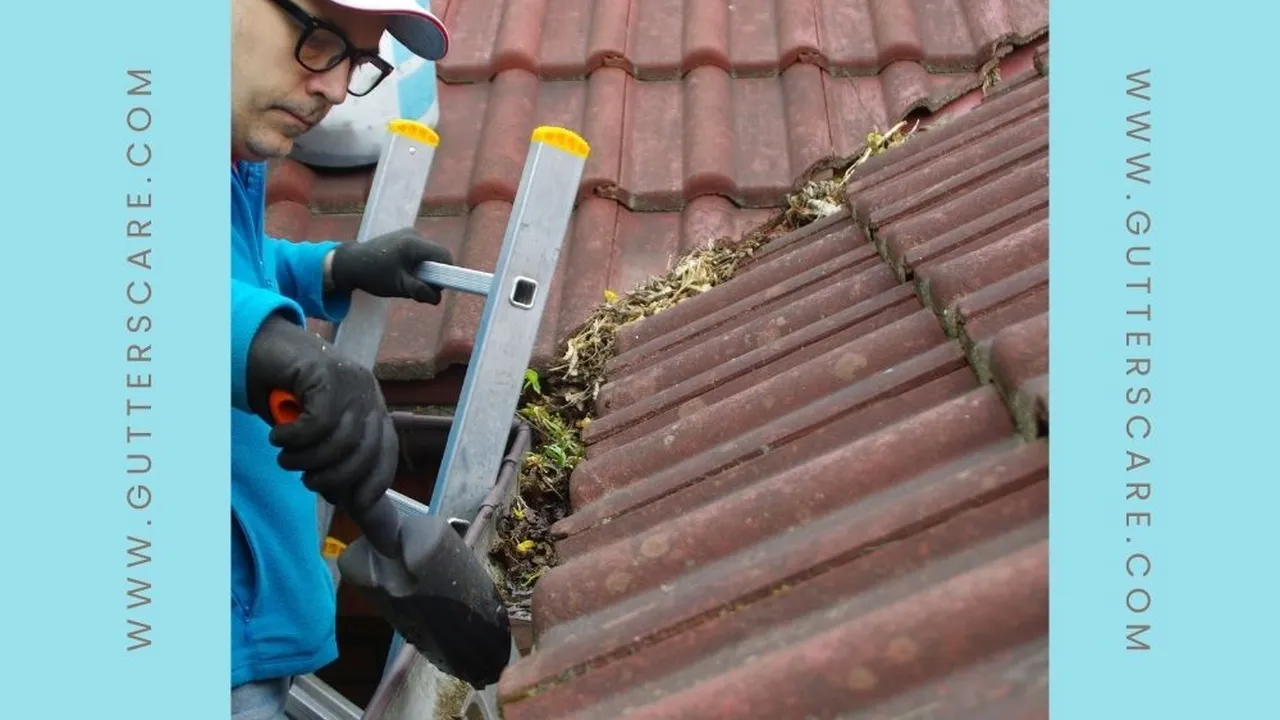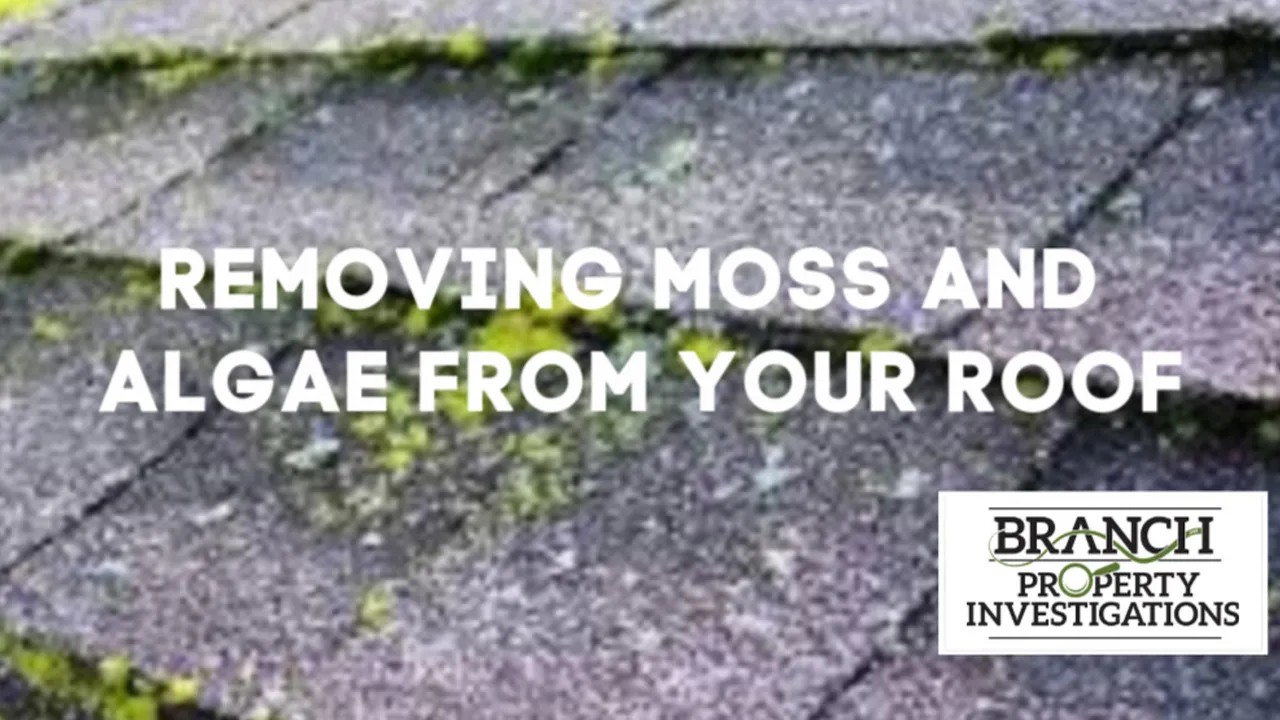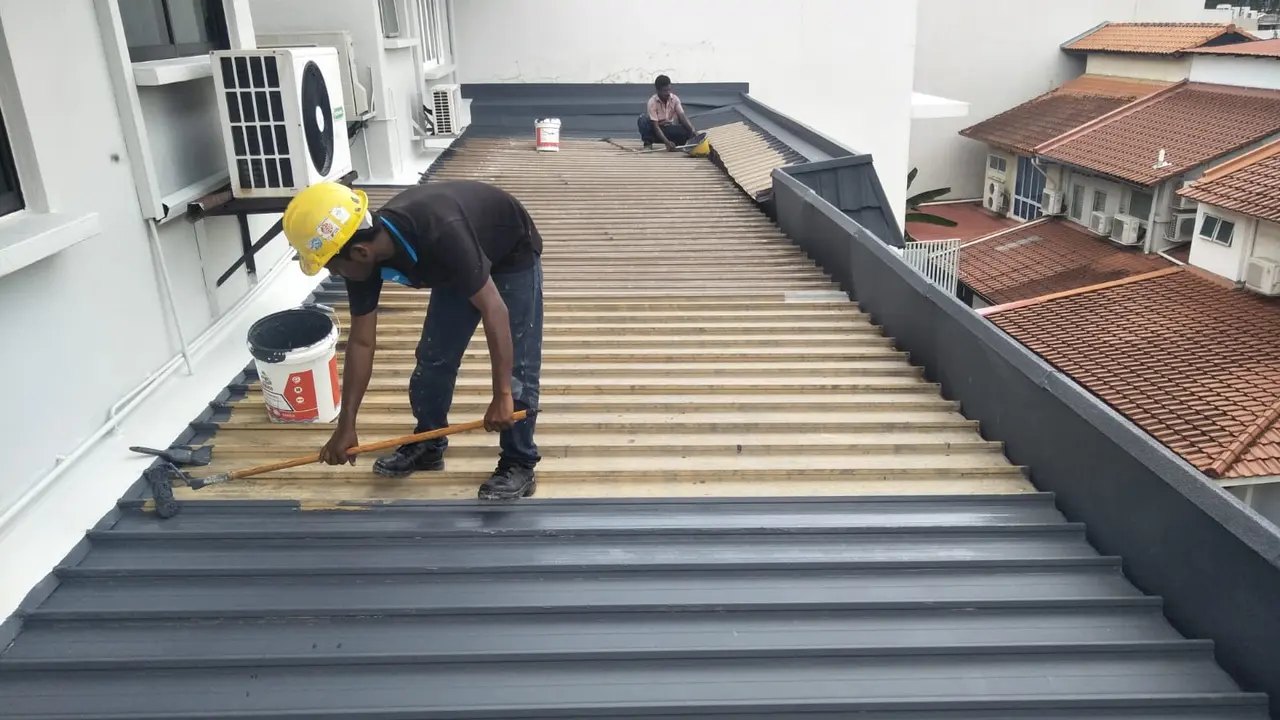Gutter Installation and Maintenance Guide
Learn about effective gutter installation and essential maintenance tips to protect your roof and foundation from water damage.

Gutter Installation and Maintenance Guide
Hey there, homeowners! Let's talk about something super important but often overlooked: your gutters. You might think they're just those things hanging off your roof, but trust me, they're doing some heavy lifting when it comes to protecting your home. Proper gutter installation and regular maintenance are absolutely crucial for keeping your roof, foundation, and even your landscaping safe from water damage. We're going to dive deep into everything you need to know, from choosing the right type of gutters to keeping them sparkling clean and functional. So, grab a coffee, and let's get started!
Understanding Gutter Systems The Basics of Home Water Management
Before we get into the nitty-gritty of installation and maintenance, let's quickly cover what a gutter system actually does. Essentially, gutters are designed to collect rainwater from your roof and channel it away from your house's foundation. Without them, water would just pour directly off your roof, eroding the soil around your foundation, potentially seeping into your basement or crawl space, and even damaging your siding and landscaping. Downspouts, which are vertical pipes, then carry this water safely to the ground, usually into a drainage system or away from the house.
Types of Gutters Choosing the Right Material and Style for Your Home
When it comes to gutters, you've got options! The material and style you choose can impact everything from cost and durability to aesthetics. Let's break down the most common types:
Aluminum Gutters Popularity and Affordability
Aluminum gutters are by far the most popular choice for homeowners in both the US and Southeast Asia, and for good reason. They're lightweight, rust-proof, and relatively inexpensive. You can also get them in a wide range of colors to match your home's exterior. Most aluminum gutters are seamless, meaning they're custom-made on-site to fit your home perfectly, which reduces the chances of leaks. They typically last around 20-30 years with proper maintenance.
- Pros: Affordable, lightweight, rust-resistant, wide color selection, seamless options.
- Cons: Can dent easily, may expand and contract with temperature changes.
- Typical Cost: $4 to $9 per linear foot installed.
- Recommended Product: Amerimax Home Products 5K Style Aluminum Gutter. This is a widely available and reliable option. It's often sold in 10-foot sections for DIY or installed seamlessly by professionals.
- Use Case: Ideal for most residential homes looking for a cost-effective and durable solution.
Vinyl Gutters DIY Friendly and Budget Conscious
Vinyl gutters are the most budget-friendly option and are often chosen by DIY enthusiasts because they're easy to install. They come in pre-cut sections that snap together. While they're rust-proof and don't require painting, they're not as durable as other materials and can become brittle in extreme temperatures, especially very cold or very hot climates. Their lifespan is generally shorter, around 10-20 years.
- Pros: Very affordable, easy DIY installation, rust-proof.
- Cons: Less durable, can sag or crack in extreme temperatures, limited color options.
- Typical Cost: $3 to $5 per linear foot installed.
- Recommended Product: Genova Products Raingo Gutter System. This is a popular snap-together vinyl system available at most home improvement stores.
- Use Case: Best for homeowners on a tight budget or those who prefer a DIY approach for smaller homes or outbuildings.
Steel Gutters Strength and Durability for Tough Climates
Steel gutters, particularly galvanized steel, offer superior strength and durability. They're much heavier and more resistant to dents and dings than aluminum. However, they are prone to rust if their protective coating is scratched or wears off, especially in humid or coastal environments. Stainless steel gutters are an option, but they are significantly more expensive. Steel gutters can last 20-30 years or more.
- Pros: Very strong, durable, good for harsh weather.
- Cons: Prone to rust (galvanized), heavy, more expensive than aluminum.
- Typical Cost: $8 to $15 per linear foot installed.
- Recommended Product: K-Style Galvanized Steel Gutters. Look for options with a good quality paint finish for added rust protection.
- Use Case: Excellent for homes in areas with heavy snowfall, strong winds, or where extra durability is needed.
Copper Gutters Premium Aesthetics and Longevity
If you're looking for a high-end, long-lasting, and aesthetically pleasing option, copper gutters are it. They don't rust, never need painting, and develop a beautiful patina over time. Copper is incredibly durable and can last 50 years or even more. The downside? They are significantly more expensive than any other option.
- Pros: Extremely durable, rust-proof, beautiful aesthetic, very long lifespan.
- Cons: Very expensive, specialized installation required.
- Typical Cost: $20 to $40+ per linear foot installed.
- Recommended Product: Classic Gutter Systems Copper Half-Round Gutters. Half-round is a traditional style that complements copper beautifully.
- Use Case: For luxury homes, historic properties, or homeowners prioritizing aesthetics and ultimate longevity.
Zinc Gutters European Style and Extreme Durability
Zinc gutters are another premium option, popular in Europe for their exceptional durability and unique appearance. Like copper, they develop a protective patina over time and are highly resistant to corrosion. They are also very long-lasting, often exceeding 50 years. They share the high cost and specialized installation requirements of copper.
- Pros: Extremely durable, corrosion-resistant, long lifespan, unique aesthetic.
- Cons: Very expensive, specialized installation, limited availability.
- Typical Cost: $15 to $30+ per linear foot installed.
- Recommended Product: Rheinzink Zinc Gutters. Rheinzink is a leading manufacturer of high-quality zinc building products.
- Use Case: Similar to copper, for high-end projects where longevity and a distinct look are paramount.
Gutter Styles K-Style vs Half-Round and Beyond
Beyond the material, you'll also choose a gutter style. The two most common are:
- K-Style Gutters: These are the most common type in the US. They have a flat back and bottom, and a decorative front that resembles crown molding. They can hold a lot of water and are generally easy to install.
- Half-Round Gutters: As the name suggests, these are half-circle shaped. They're often chosen for their classic, traditional look, especially on older or historic homes. They tend to be a bit more expensive and can be harder to clean due to their shape.
- Fascia Gutters: These are custom-made to fit flush with the fascia board, offering a very clean, integrated look. Popular in some regions, especially the Pacific Northwest.
Gutter Installation The Process from Start to Finish
Whether you're doing it yourself or hiring a pro, understanding the installation process is key. For seamless gutters, professional installation is almost always recommended due to the specialized equipment needed.
Planning and Measurement Essential First Steps
First, you'll need to measure your roofline to determine how many linear feet of gutters and downspouts you'll need. Don't forget to account for corners and end caps. You'll also need to decide on the size of your gutters (5-inch or 6-inch are standard for residential homes) and downspouts (3x4 inch or 4-inch round are common). Larger gutters and downspouts are better for homes with large roof areas or in regions with heavy rainfall, like many parts of Southeast Asia.
Mounting and Pitch Ensuring Proper Drainage
Gutters need to be mounted securely to your fascia board using hangers. The most crucial part of installation is ensuring the correct pitch. Gutters should slope slightly (about 1/4 inch for every 10 feet) towards the downspouts to ensure water drains properly and doesn't sit stagnant. Improper pitch is a common cause of standing water and debris buildup.
Downspout Placement and Drainage Solutions
Downspouts should be strategically placed to direct water away from your foundation. Ideally, water should be discharged at least 5-10 feet away from your home. You can use splash blocks, downspout extensions, or even connect them to an underground drainage system or a rain barrel for water harvesting. In areas with heavy rainfall, consider multiple downspouts for larger gutter sections.
Gutter Maintenance Keeping Your System Running Smoothly
Installation is just the beginning. Regular maintenance is what truly extends the life of your gutters and prevents costly damage to your home.
Regular Cleaning The Most Important Task
This is the big one! Gutters should be cleaned at least twice a year, typically in spring and fall, or more frequently if you have a lot of trees nearby. Clogged gutters are the number one cause of gutter failure and water damage. Here's how to do it:
- Safety First: Always use a sturdy ladder and have someone spot you. Wear gloves to protect your hands.
- Remove Debris: Scoop out leaves, twigs, dirt, and any other gunk. A small trowel or a gutter scoop can be helpful.
- Flush with Water: Once the large debris is removed, use a garden hose to flush water through the gutters and downspouts. Watch to ensure water flows freely and doesn't back up. If a downspout is clogged, try flushing it from the top or using a plumber's snake.
Inspecting for Damage and Wear
While cleaning, take the opportunity to inspect your gutters for any signs of damage:
- Leaks: Look for rust spots, holes, or separation at seams.
- Sagging: Check if any sections are pulling away from the fascia or sagging, indicating loose hangers or too much weight from debris.
- Rust: Especially on steel gutters, look for any signs of rust.
- Loose Fasteners: Ensure all hangers and fasteners are secure.
Repairing Common Gutter Issues
Many minor gutter issues can be repaired relatively easily:
- Small Leaks: For small holes or cracks, you can use gutter sealant or patching kits. For seamless gutters, leaks are less common but can occur at end caps or downspout connections.
- Loose Hangers: Re-secure loose hangers with longer screws or replace damaged ones.
- Sagging Sections: If a section is sagging, it might need additional hangers or the existing ones might need to be repositioned to restore the proper pitch.
- Clogged Downspouts: As mentioned, flush with water or use a snake. Sometimes, you might need to detach the downspout section to clear a stubborn clog.
Gutter Guards Are They Worth the Investment
Gutter guards are designed to prevent leaves and debris from entering your gutters, theoretically reducing the need for frequent cleaning. There are several types:
- Mesh Screens: These are the most basic and affordable. They sit over the gutter opening and block larger debris.
- Surface Tension Guards: These have a curved design that allows water to cling to the surface and flow into the gutter, while debris falls off.
- Fine Micro-Mesh Guards: These offer the best protection, blocking even small particles like shingle grit and pine needles.
Pros and Cons of Gutter Guards
- Pros: Significantly reduce cleaning frequency, prevent clogs, can extend gutter lifespan.
- Cons: Can be expensive, some types can still get clogged with very fine debris or seed pods, may affect water flow in heavy rain, can make cleaning harder if they need to be removed.
- Recommended Product: LeafFilter Gutter Protection (professional installation) or Raptor Gutter Guard (DIY micro-mesh). LeafFilter is a premium, professionally installed system known for its effectiveness. Raptor offers a high-quality DIY micro-mesh option.
- Use Case: Highly recommended for homes surrounded by many trees, especially those with pine needles or small seeds.
Advanced Gutter Solutions and Innovations
The world of gutters isn't standing still! Here are a few advanced solutions to consider:
Rainwater Harvesting Systems
Instead of just directing water away, why not collect it? Rainwater harvesting systems use your gutters to channel water into rain barrels or larger cisterns. This collected water can then be used for gardening, washing cars, or even flushing toilets, saving you money on your water bill and being environmentally friendly. This is particularly popular in regions with water scarcity or high water costs.
Heated Gutters and Downspouts
In cold climates, ice dams can be a major problem, causing water to back up under your roof and into your home. Heated gutters and downspouts use electric heating cables to melt snow and ice, ensuring water can flow freely. This is a fantastic solution for preventing ice dams and protecting your roof in winter.
Smart Gutter Monitoring Systems
Yes, even gutters are getting smart! Some systems can monitor water flow and alert you to potential clogs or issues, allowing you to address problems before they become major headaches. While still emerging, these technologies promise to make gutter maintenance even easier.
When to Call a Professional Gutter Contractor
While some gutter tasks are DIY-friendly, there are times when calling in the pros is the smartest move:
- New Installation: Especially for seamless gutters, professional installation ensures a perfect fit and proper pitch.
- Major Repairs: If you have significant damage, large leaks, or sections pulling away from your house, a professional can assess the situation and make lasting repairs.
- Height and Safety Concerns: If your roof is very high or steeply pitched, or if you're uncomfortable working on a ladder, it's always safer to hire a professional.
- Persistent Clogs: If you've tried to clear a clog and it keeps coming back, there might be a more complex issue that a professional can diagnose.
Remember, your gutters are a vital part of your home's defense against the elements. By understanding the different types, ensuring proper installation, and committing to regular maintenance, you'll protect your investment and keep your home safe and dry for years to come. Happy guttering!
:max_bytes(150000):strip_icc()/277019-baked-pork-chops-with-cream-of-mushroom-soup-DDMFS-beauty-4x3-BG-7505-5762b731cf30447d9cbbbbbf387beafa.jpg)






